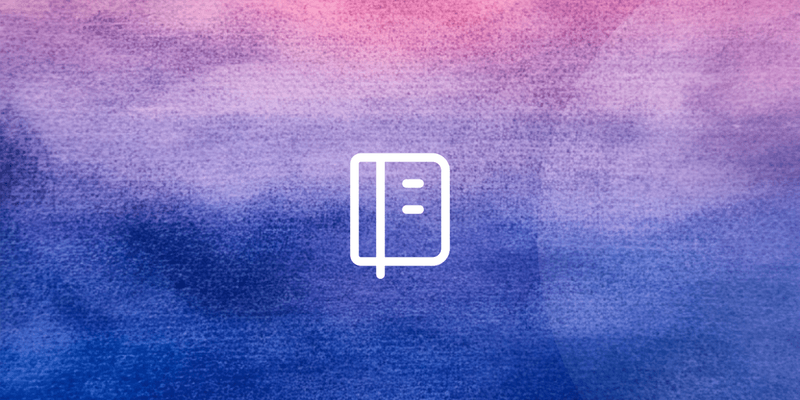With the rapid evolution of artificial intelligence, many have found ways to incorporate AI into their daily operations to automate mundane tasks. In addition to its ability to rapidly process large volumes of data, this advanced technology can optimize multiple processes and reduce the risk of manual errors. However, the outcomes you can expect are only as good as the prompts you give the AI. That's why, in this article, we'll elaborate on the top 5 AI prompts for user research note-taking and their use.
By elaborating on the use and importance of note-taking during user research, you'll get a better understanding of how to incorporate this technology to achieve better results. Whether you're interested in optimizing your meeting or research notes, we'll provide you with the necessary tips and tricks that will benefit you in the long term. By providing you with examples of some of the most common AI prompts we use for interview notes, you'll know which ones you should incorporate to meet your unique needs and circumstances.
Continue reading to discover how to use AI for user research note-taking and its best prompts.
The Importance of User Research Note-Taking
Note-taking plays a crucial role in any user research process. It allows you to capture vital information during user testing or interviews that will support the qualitative data you gather. Furthermore, capturing real-time data gives you detailed insights into the participants' feedback, actions, and non-verbal cues.
By developing your note-taking skills, you'll know how to organize key data and extract information regarding areas of improvement and pain points by grouping similar themes and behaviors. Once you've captured this information, you can use it to advance your current user research or as reference material for future projects.
However, even though note-taking sounds simple at first, you may find it challenging to participate in the meeting or interview while also taking notes of the participant's responses. Even if you are skilled at multitasking, taking notes while actively communicating may result in insufficient information and misinterpretation of crucial data. Not only can this negatively affect the overall user research process, but it can also lead to making incorrect decisions and product changes.
For this reason, many researchers have begun utilizing AI to automate this process and enhance research outcomes.
Photo by Andrew Neel on Unsplash
AI Prompts for User Research Note-Taking
Now that you're well-acquainted with the importance of research notes, we want to elaborate on the top 5 AI prompts for user research note-taking. As mentioned, the results you get from incorporating artificial intelligence to automate taking research notes are only as good as the prompts you give the AI. The main mistake we have observed among numerous researchers is expecting this technology to operate correctly without any manual input.
Since we've already gone through the process of experimenting and testing various note-taking prompts, we want to save you the effort and elaborate on the ones that have shown the best results. With that in mind, here are some of the best user research note-taking prompts you can try yourself:
- Summarizing research calls
- Extracting insights
- Sentiment analysis
- Transcription
- Identifying key pain points and areas of improvement
Summarizing research calls
The first AI prompt for note-taking we'll elaborate on is regarding summarizing research calls. For those who have previously conducted any type of user interview or usability test, you're already aware that the conversation doesn't always revolve around key information. Furthermore, your notes may lack context, hindering your ability to understand the bigger picture and extract key insights.
By using artificial intelligence, you can quickly summarize the main points of your notes without missing any crucial information. While you can adjust your prompt based on your research goals, it is crucial to provide context beforehand. Thus, we highly advise you to include as many details regarding the participant, research objectives, and the product or service being tested as possible.
Here's an example of what an AI prompt for summarizing research calls should look like:
"Summarize the key findings from a user research call with [participant information] using [product/service] for the first time."
Extracting insights
Another AI prompt for user research note-taking revolves around extracting insights. The main goal behind any user research process is gathering key information that can be used to make data-driven decisions for future improvements. Even after you've summarized the research call, you may still find it challenging to extract actionable insights.
Thus, you can instruct the AI software to generate and organize clear insights from large volumes of data. A simple AI prompt you can use for this reason is the following:
"Generate insights from the following notes and organize them in bullet points"
Image by Tung Nguyen from Pixabay
Sentiment analysis
Another key element in user research is sentiment analysis. This process is used to analyze text and determine the emotional tone of the message. The three main classifications are positive, negative, and neutral, giving you additional feedback on the user's interpretation of the product.
The main AI prompt you can use for this purpose is the following:
"Analyze the following text to determine the overall sentiment. Categorize the sentiment as positive, negative, or neutral, and highlight any specific phrases that indicate the user's emotional state. Additionally, provide a brief summary of the user's emotional responses throughout the session."
If you want to break down this prompt into multiple sections so you can focus more on a specific segment, you can try the following examples:
- "Determine the overall sentiment of the user during the session."
- "Identify specific points where the user expressed frustration or dissatisfaction."
- "Highlight moments where the user provided positive feedback or seemed satisfied with the product."
- "Note any neutral or indifferent reactions the user had during the research."
Transcription
Many user researchers prefer to record their interviews or take audio notes. In such cases, you must first transcribe your recordings to extract information from them. The main problem with this process is that the transcript may become a bulky block of text without any organization. When this happens, you can prompt the AI to organize your transcript with the following instructions:
"Organize the following transcript by separating the paragraphs and structuring the conversation into clear sections. Remove filler words and irrelevant tangents, ensuring that the final output is concise and easy to follow."
Identifying key pain points and areas of improvement
The last AI prompt for note-taking can be used to identify key pain points and areas of improvement. Once you've structured your transcripts, summarized the findings, and extracted key insights, you can instruct the AI software to focus on your main research objectives. For example, you can use the following prompt to identify the key pain points:
"Identify customer pain points when using [specific product or service] and come up with solutions that address those issues."
As for key areas of improvement, you can use a similar prompt such as the following:
"Identify the key areas of improvement when using [specific product or service] and come up with optimization solutions."
Tips and Tricks for User Research Note-Taking
After exploring some of the most useful prompts, we also want to highlight the best tips and tricks for AI user research note-taking we've gathered throughout the years. Here are some important practices to adopt as you begin utilizing artificial intelligence for interview note-taking:
- Be specific: the general rule in using AI for note-taking is to try to be as thorough and specific as possible. By providing the software with detailed instructions instead of addressing general questions, it'll be able to generate more comprehensive and detailed results.
- Grammar: to achieve the best note-taking results, it's important to ensure that your prompts are grammatically correct. Remember that AI requires manual instructions to properly generate the desired results. Thus, having too many grammar errors may confuse the software and drive it to generate insufficient answers.
- Include all necessary information: for optimal results, try including specific vocabulary terms or key concepts alongside the notes that are beneficial to the research.
- Remove unnecessary sections: since most interviews and meetings contain unnecessary sections, you can try removing these parts manually so the AI focuses on the segments that hold the most value.
Photo by Scott Graham on Unsplash
The Benefits of Using User Evaluation for User Research Note-Taking
Lastly, we want to highlight the benefits of using User Evaluation for note-taking during your user research process. As mentioned, some of the most important AI prompts for note-taking revolve around summarizing findings, extracting insights, organizing transcripts, and identifying the user's sentiment and key pain points. Since we understand that focusing on each of these tasks separately takes up a lot of time, we've designed a platform that tackles all of them simultaneously.
Instead of relying on AI prompts to extract meaning from your research, you will find all necessary features in one place. By uploading your written, video, or audio notes, User Evaluation can transcribe them in over 57 languages and organize them based on speakers. In addition to providing a clear overview of speaker timeframes, you can instantly discover the emotions behind the user's experience by choosing the "Sentiment Analysis" option.
As for extracting key information from your research notes, User Evaluation used AI technology to generate clear and actionable insights alongside their data sources. Additionally, you can organize all your findings in an intuitive Kanban board and appoint tags and notes for future reference.
Conclusion
After discovering the top 5 AI prompts for user research note-taking, keep in mind that AI software requires your instructions to generate desirable results. Thus, it's important to be as thorough as possible when writing the prompts, while also ensuring sufficient information and correct grammar. Given that this ever-evolving technology can analyze large volumes of data, using the right prompt can significantly accelerate the research process and reduce manual errors.
Lastly, if you're ever looking for the ideal tool that includes all the mentioned features, check out what User Evaluation offers. Designed as an AI-driven platform for customer understanding, you can transcribe your content, summarize your calls, and extract key insights in just a few clicks. So contact us today and discover how artificial intelligence can optimize your note-taking for user research!



